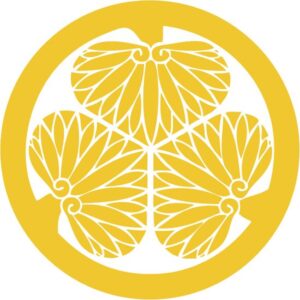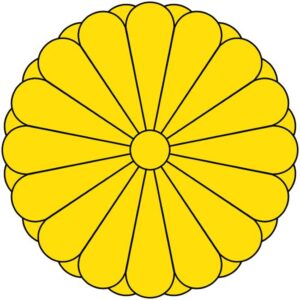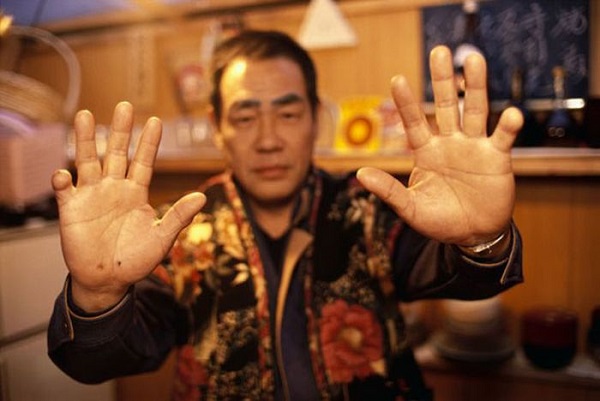The 1868 Meiji Reforms ravaged the feudal world. Many samurai were deeply injured by these reforms, which they saw as a betrayal of their lifestyle and the true nature of Japan. Still, the samurai is a model for a number of recent Japanese groups and organizations, such as the infamous Yakuza. The Japanese underworld resembles one of the most interesting philosophies on Earth. The ideas behind the samurai concept date back at least 1000 years in Japan and are based on Confucian ethics, which originated in a world dominated by war. The law that the samurai obeyed and followed until his death was called Bushido, 武士道, “the way of the warrior. The Samurai had been an influential and prestigious part of Japanese society for centuries. However, since the 1600s, the Tokugawa shogunate (one-man rule) had reduced the opportunities for war. When there was peace and prosperity, the merchant classes grew, and the warriors were mostly left alone.
Mon crests






From the 12th century in feudal Japan, decisive badges (mon or kamon) were used on the battlefield, on armor, on banners, and on almost any personal object. Unlike the complicated tradition of western armament, each mon generally consisted of a single flamboyant symbol in a circle; the color was insignificant. The coat of arms could be a military motive like an arrow, or an animal symbol like the butterfly of the Taira clan. However, the most common were plant-based.
The eldest son of the family usually inherited his father’s arms, and the younger sons used a slightly different kind of motive. As a result, there are 10,000 patterns registered today. The only arm that was inviolable was the coat of arms of the Emperor and his chief advisor. After the Muromachi period (1336-1753), the social use of the mon became more common. The new merchant class adapted them to the advertising logos that have survived to the present day.
The seven virtues of Bushido
These virtues were the cornerstones of the samurai warrior principles. They are also almost identical to the “Core Army Values” adopted by the US Army in the mid-1990s (loyalty, duty, respect, selfless service, honor, integrity, and personal courage). Among the many books written on the subject, the one best known in the west is Bushido Shoshinshu, the Code of the Samurai. The work was written by the samurai and military strategist of the early 18th century, Taira Shigesuke. The book is still important to reflect the mentality of modern and especially institutional Japan.
Rectitude 義, Courage 勇, Benevolence 仁, Respect 礼(禮), Honor 名誉, Honesty 誠, and Loyalty 忠実.
Seven virtues of the Bushido code.
The legacies of the Samurai
The reforms carried out on the road to modernization in the 1860s stimulated the Samurai idea in various organizations. Gen’yōsha, the Black Ocean Society, was one of them. Founded in 1881, the association aimed to unite hundreds of secret groups, each with their own unique codes. This very powerful and aggressive group turned Japan’s first elections in 1892 into a bloodbath. They also killed the Korean queen in 1895, which started a 50-year Japanese invasion.
Kokuryu-kai, namely the Black Dragon Society, was founded in 1901. In addition to supporting Japan’s policy of spreading to Asia, the association also carried out various acts of violence against student and worker associations; politicians who were perceived as left-wing, and those who were against the democratization process in general.
The Black Dragon Society collaborated with the gamblers and gangsters of the Yakuza for their influence, which turned into one of the world’s leading crime cartels. The Yakuza did not have its own traditional policy, so they romanticized the samurai of the past; thus, a mask of grandeur was put on the actions of crime such as extortion, fraud, prostitution, and human trafficking.
Yakuza

Yakuza people claim that they have invariable moral rules (just like the Italian Mafia) originating from the Bushido. Loyalty in every gumi or gang is extremely important. The hierarchy is strict, as in other parts of Japanese society, and feudal rituals are still performed. However, the Yakuza is not a secret community; they are part of Japanese politics and business.
So much so that some community headquarters use a nameplate at their doors, just like companies. Yakuza can be easily recognized even when they do not wear their mon that reveal their clans. They have gaudy clothes, expensive cars with dark windows, and snippy movements… All of these are qualities that define gangsters all over the world, but it can be said that they are especially descriptive in a country where even the company heads do not put themselves at the forefront.
Yakuza traditions
The Yakuza is also famous for its eye-catching tattoos that cover all their bodies, namely horimono. Such tattoos have always been associated with “wind-driven groups” and have identified those who live on the edge of society. Making tattoos is a symbol of group solidarity and physical bravery, as well as a declaration of one’s preference for the “dark side”. When a samurai disappoints his lord, he pays the price with hara-kiri (seppuku). This was a traditional form of suicide, and today’s yakuza pay the cost of the error with yubitsume instead, that is, by cutting a part of the finger.
Organization admission ceremonies and other ceremonies that seal the agreements made are of great importance. In these ceremonies, a few glasses of sake are offered in a presentation to the Shinto gods respected by the Yakuza. The blood brotherhood ceremonies based on blood exchange are not so popular anymore due to the risk of HIV.


